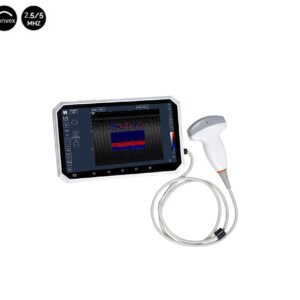Teleultrasonography in Education, Training, and Patient Care
Under the WHO definition of telemedicine, “the delivery of health care services, where distance is a critical factor,”
telemedicine services are intended for the exchange of valid information for the diagnosis, prevention, and treatment of disease and for the continuing education of health service providers, as well as for research and evaluation purposes.
Ultrasonography is a very useful diagnostic tool as it is a non-invasive, generally inexpensive, and highly portable method that does not use ionizing radiation.
However, generating and interpreting ultrasound images is highly operator-dependent. As a consequence, performance and interpretation of these examinations have traditionally been limited to medical specialists.
Opinions in the literature are divided with regard to the transmission system involved in teleultrasonography. Some authors consider that good image quality can only be obtained with the use of asynchronous transmission, which, in addition to good diagnostic accuracy, allows for the training and professional supervision to produce a satisfactory level of clinical competence.
Other studies have sought to demonstrate the accuracy of the teleultrasonography performed in real-time between a tertiary center and a remote area. The authors argue that the image quality was not very clear when teleultrasonography first started but that current telecommunication and image compression technologies have made high-quality synchronous and asynchronous transmissions feasible.
Other authors argue in favor of real-time transmissions because the asynchronous mode only allows images and videos to be stored for future analysis and their interpretation may be incomplete or diagnostically inaccurate if some important information is missing and cannot be recovered.
The authors also considered this educational tool superior to verbal instruction while training doctors at a distance because it enables new skills to be acquired in half the time required using traditional educational practices.
This technology can apply when a cardiologist is at home and a hospital is struggling to get a good image of a patient who may or may not be in heart failure. The cardiologist can log in, saving a trip to the hospital and keeping this important exam from being delayed.
Another place that shows the practicality of this wonderful technology, is in an emergency or trauma care situation where immediate assessment is needed.
Being able to use ultrasound for a variety of applications on a patient (eg, to identify the impact of trauma, source, and extent of injury, the impact of treatment rendered) and then put together a plan for whether the patient will need to be transferred to a higher level of care or can remain in their home community, is vital. It also can then be used as an educational tool for the remote provider for that case, as well as future patients/cases.
The Handheld Color linear 128E Ultrasound Scanner, 5-10MHz SIFULTRAS-3.2 is a new handheld medical imaging device that can make medical ultrasounds significantly cheaper and more efficient. The same size as an iPhone 6 plus, you could hold this compact and versatile device with a special ultrasound scanner/transducers to a person’s chest, neck, abdomen, or any part of the body’s skin. As such, you can create vivid, moving, clear images of what’s inside in real-time.
With a high-speed WiFi/Bluetooth data connection, the handheld Color linear 128E Ultrasound Scanner 5-10MHz SIFULTRAS-3.2 can upload the images to the private cloud in real-time integrating telemedicine into service, so that a specialist in a remote location can weigh in on the images that the device records.
Combining through the bank of images, the device will extract key features/characteristics in the image. The SIFULTRAS-3.2 Features wavelet filter, pseudocolor, image smoothing, frame correlation, 128E, and 5M pixels camera. The artificial intelligence of deep learning will enable this pocket-size ultrasound to perform automated diagnoses in the future.
Reference: The Feasibility of Real-Time Transmission of Sonographic Images from a Remote Location over Low-Bandwidth Internet Links: A Pilot Study
The evidence base of telemedicine: overview of the supplement


